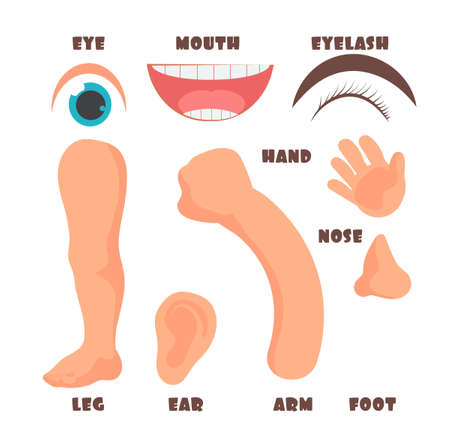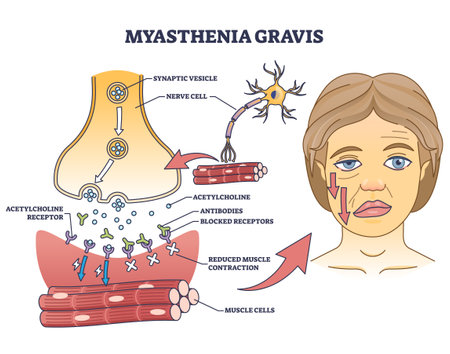Understanding Restless Legs Syndrome
Restless Legs Syndrome (RLS), also known as Willis-Ekbom disease, is a neurological condition that affects thousands of people across the UK. It is characterised by an uncontrollable urge to move the legs, often accompanied by uncomfortable sensations such as tingling, burning, or creeping feelings. These symptoms typically worsen during periods of rest or inactivity and are most noticeable in the evening or at night, leading to significant disruption in sleep and overall quality of life.
In the United Kingdom, RLS is estimated to affect around 5-10% of the adult population, with women being more likely to experience symptoms than men. The prevalence increases with age, but it can also occur in children and young adults. While many British residents may experience mild symptoms, a significant proportion report moderate to severe discomfort that interferes with daily activities and sleep patterns.
Key symptoms commonly reported by individuals in the UK include: an overwhelming need to move the legs, especially when sitting or lying down; unpleasant sensations deep within the limbs; temporary relief upon movement; and worsening symptoms during the evening hours. These factors can contribute to fatigue, daytime sleepiness, and even emotional distress if left unaddressed. Understanding RLS is the first step for UK residents seeking effective management strategies and improved wellbeing.
2. Causes and Risk Factors
Restless Legs Syndrome (RLS) is a complex neurological disorder with multifactorial causes. Understanding these factors is crucial for UK residents, as the prevalence, contributing genetic backgrounds, and lifestyle patterns may differ from other populations.
Primary vs Secondary RLS
Primary RLS is often idiopathic and thought to have a genetic basis, with family studies in the UK suggesting that up to 60% of those affected have a first-degree relative with similar symptoms. Secondary RLS, on the other hand, occurs as a result of other underlying conditions or external triggers.
Genetic Factors
Recent UK-based genome-wide association studies (GWAS) have identified several gene variants linked to RLS, notably in the MEIS1, BTBD9, and PARK2 genes. Individuals of Northern European descent, including those in Britain, display a higher frequency of these variants. Family clustering is commonly observed, particularly among women.
Lifestyle-Related Risk Factors
The following table summarises key lifestyle and health-related risk factors relevant to the UK population:
| Risk Factor | Description & UK Context |
|---|---|
| Iron Deficiency | Common among British women of childbearing age; associated with lower ferritin levels seen in NHS blood test audits. |
| Chronic Diseases | Conditions such as diabetes, kidney disease, and rheumatoid arthritis are linked to increased RLS risk; prevalence rising in the UK due to ageing population. |
| Pregnancy | Affects 10–20% of pregnant women in the UK; symptoms often resolve after childbirth. |
| Caffeine & Alcohol Intake | Binge drinking and high tea/coffee consumption can exacerbate symptoms; both habits are noted in British lifestyle surveys. |
| Lack of Physical Activity | Sedentary lifestyles—common in urban areas like London—are linked to greater symptom severity. |
| Certain Medications | Use of antihistamines, antidepressants, and antipsychotics (as prescribed by the NHS) may trigger or worsen RLS symptoms. |
Other Contributing Factors Specific to the UK
- Nutritional Patterns: Lower intake of iron-rich foods among some vegetarian/vegan groups has been noted in recent National Diet and Nutrition Surveys.
- Mental Health: Higher rates of anxiety and depression—both associated with RLS—are reported in certain regions across England and Scotland.
- NHS Waiting Times: Delayed diagnosis due to longer waiting lists for neurology appointments can impact early intervention for secondary causes.
Summary
The causes and risk factors for RLS are varied and interlinked, with genetics playing a significant role alongside modifiable lifestyle choices. For UK residents, awareness of these specific risk factors—and their prevalence within local communities—is essential for timely identification and management of Restless Legs Syndrome.

3. Diagnosis and When to Seek Medical Advice
Recognising when symptoms of Restless Legs Syndrome (RLS) require professional attention is key to effective management. Many UK residents may dismiss mild symptoms as simple discomfort or stress, but persistent or worsening sensations in the legs—especially if they disturb sleep or daily activities—warrant a conversation with your GP.
When Should You See Your GP?
If you experience regular urges to move your legs, especially at rest or during the evening, and these symptoms interfere with sleep quality or cause significant distress, it is advisable to book an appointment with your GP. Early intervention can help rule out underlying causes, such as iron deficiency or neuropathy, which are sometimes linked with RLS.
Typical NHS Diagnostic Steps
Within the NHS, diagnosis of RLS primarily relies on your symptom history and medical background. Your GP will likely ask detailed questions about the frequency, duration, and severity of your symptoms. A physical examination may be performed to assess for signs of neurological or vascular conditions. Blood tests, particularly for iron levels and kidney function, are commonly requested to exclude secondary causes. In some cases, you may be referred to a specialist—often a neurologist or sleep clinic—for further assessment if the diagnosis is uncertain or if initial treatments are ineffective.
Tips for Effective Communication with Healthcare Providers
To make the most of your GP appointment, consider keeping a symptom diary noting when symptoms occur, their intensity, and any triggers you identify. Be prepared to discuss any impact on your daily life and sleep patterns. List all current medications, as certain drugs can exacerbate RLS symptoms. If possible, bring along a family member who has noticed changes in your behaviour or sleep routine—they may provide useful insights for your clinician. Remember, clear and open communication helps ensure an accurate diagnosis and tailored treatment plan.
4. Management and Treatment Options
Effective management of Restless Legs Syndrome (RLS) requires a tailored approach that considers both medical and lifestyle factors. In the UK, evidence-based treatments are widely available through the NHS and private healthcare providers. Understanding these options helps individuals make informed decisions about their care.
Medication Options
For moderate to severe RLS, medication may be recommended when lifestyle adjustments alone are insufficient. The table below summarises commonly prescribed medications for RLS in the UK:
| Medication Type | Example Drugs | Key Considerations |
|---|---|---|
| Dopamine Agonists | Pramipexole, Ropinirole, Rotigotine patch | Often first-line; monitor for impulse control issues and augmentation. |
| Alpha-2-delta Ligands | Gabapentin, Pregabalin | Useful if pain or sleep disruption is prominent; may cause drowsiness. |
| Opioids (short-term) | Codeine, Oxycodone (specialist use only) | Reserved for severe cases; risk of dependence; regular review required. |
| Iron Supplements | Ferrous sulphate, ferrous fumarate | If ferritin levels are low; monitor iron status regularly. |
Non-Pharmacological Interventions
Lifestyle modifications are often recommended as first-line strategies or alongside medication. Evidence suggests that these interventions can reduce symptom severity and improve quality of life:
- Regular Exercise: Gentle activities such as walking, swimming, or yoga can alleviate symptoms. Avoid vigorous exercise close to bedtime.
- Sleep Hygiene: Maintain a consistent sleep schedule and create a restful bedroom environment.
- Avoid Triggers: Limit caffeine, nicotine, and alcohol intake—particularly in the evening—as these can exacerbate symptoms.
- Mental Wellbeing: Stress reduction techniques, including mindfulness or cognitive behavioural therapy (CBT), may help manage symptom flare-ups.
- Leg Massage and Stretching: Massaging the legs or gentle stretching before bed can provide symptomatic relief for some individuals.
Practical Self-Care Tips for Daily Life
Coping with RLS day-to-day involves practical adjustments. Consider the following tips to manage symptoms effectively:
- Stay Active During Long Periods of Inactivity: If you have a desk job or long commutes, take short breaks to move around regularly.
- Use Heat or Cold Packs: Applying warm or cool packs to your legs may ease discomfort for some people.
- Pillow Support: Placing a pillow between your knees when sleeping on your side can sometimes help reduce restlessness.
- Keep a Symptom Diary: Track triggers and successful interventions to share with your GP or specialist during reviews.
NHS Resources and When to Seek Help
If self-care strategies are not controlling your symptoms, or if RLS disrupts your daily life significantly, consult your GP. They may refer you to a neurologist or sleep specialist for further assessment. The NHS website also offers up-to-date guidance on RLS treatments available across the UK.
5. Lifestyle Modifications and Home Remedies
Managing Restless Legs Syndrome (RLS) in the UK often starts with practical lifestyle changes that reflect local habits and resources. Making small, sustainable adjustments can significantly ease symptoms and improve quality of life.
Dietary Considerations
A balanced British diet, rich in iron, folate, and magnesium, can help manage RLS symptoms. Consider incorporating leafy greens like spinach, pulses, whole grains such as porridge oats, and lean meats such as chicken or locally sourced beef into your meals. Limit caffeine intake from tea or coffee—especially in the evening—as it can exacerbate symptoms. If you enjoy a traditional fry-up or processed foods, try to reduce these and opt for fresh, home-cooked alternatives where possible.
Exercise and Physical Activity
Regular, moderate exercise is beneficial for those with RLS. Activities popular across the UK, such as brisk walking in your local park, cycling along country lanes, swimming at your community leisure centre, or even gentle yoga at home can all support symptom relief. Avoid vigorous exercise late in the evening, as this may worsen restlessness before bedtime.
Sleep Hygiene for Better Rest
Maintaining a consistent sleep schedule is crucial. Aim to go to bed and wake up at the same time daily—even on weekends. Keep your bedroom cool and dark, using blackout curtains if needed during lighter summer nights. Limit screen use from devices like mobiles or tablets before bedtime and consider relaxing routines such as reading a book or listening to calming music instead.
Home-Based Strategies
Many UK residents find relief through simple home remedies. Warm baths before bed can soothe muscles; adding Epsom salts may enhance relaxation. Gentle leg stretches or massages using over-the-counter creams can also help. Some find comfort with a hot water bottle or microwaveable wheat bag placed on the legs. For those who find their legs restless during the day, engaging in hobbies such as knitting or puzzles can provide distraction and reduce urges to move.
Community Support
Don’t overlook support from local groups or charities like RLS-UK for advice tailored to British lifestyles. Sharing experiences with others can foster understanding and introduce new coping methods suited to everyday life in the UK.
Key Takeaway
By integrating culturally appropriate dietary habits, regular physical activity, good sleep hygiene practices, and accessible home remedies, UK residents living with RLS can better manage their symptoms while maintaining an active and fulfilling lifestyle.
6. Support and Resources in the UK
For individuals and families affected by Restless Legs Syndrome (RLS) in the UK, access to reliable support networks and trusted information is crucial. Fortunately, there are several avenues available for both practical advice and emotional support.
British Support Groups
The Restless Legs Syndrome UK Foundation (RLS-UK) is a leading charity dedicated to supporting those living with RLS. They offer up-to-date information on treatments, management strategies, and organise regular meetings and webinars where members can share experiences. Many local branches also provide peer support groups, allowing people to connect face-to-face or virtually with others who understand the challenges of RLS.
NHS Resources
The NHS website offers comprehensive information about RLS symptoms, diagnosis, treatment options, and self-care tips tailored for UK residents. Patients can also discuss their concerns with GPs or specialists through the NHS system, where referrals to neurology or sleep clinics may be arranged if needed. The NHS provides guidance on medication safety, lifestyle modifications, and mental health support for those whose sleep or wellbeing are affected by RLS.
Local Charities and Community Networks
In addition to national organisations, many local charities focus on neurological conditions and long-term health issues. These groups often host workshops, provide helplines staffed by volunteers with lived experience, and offer advocacy services to help navigate benefits or workplace adjustments. Community centres may facilitate coffee mornings or activity sessions tailored for people coping with sleep disturbances and chronic discomfort.
Online Forums and Social Media
Several online platforms—including UK-based Facebook groups and health forums—serve as valuable spaces for sharing coping strategies, discussing new research findings, and accessing encouragement from fellow sufferers. While these platforms should not replace professional medical advice, they can reduce feelings of isolation and empower individuals to better manage their condition.
How to Get Involved
If you or a loved one is affected by RLS, consider reaching out to these resources or joining local support initiatives. Staying informed and connected can make a significant difference in managing symptoms and improving quality of life in the UK context.


